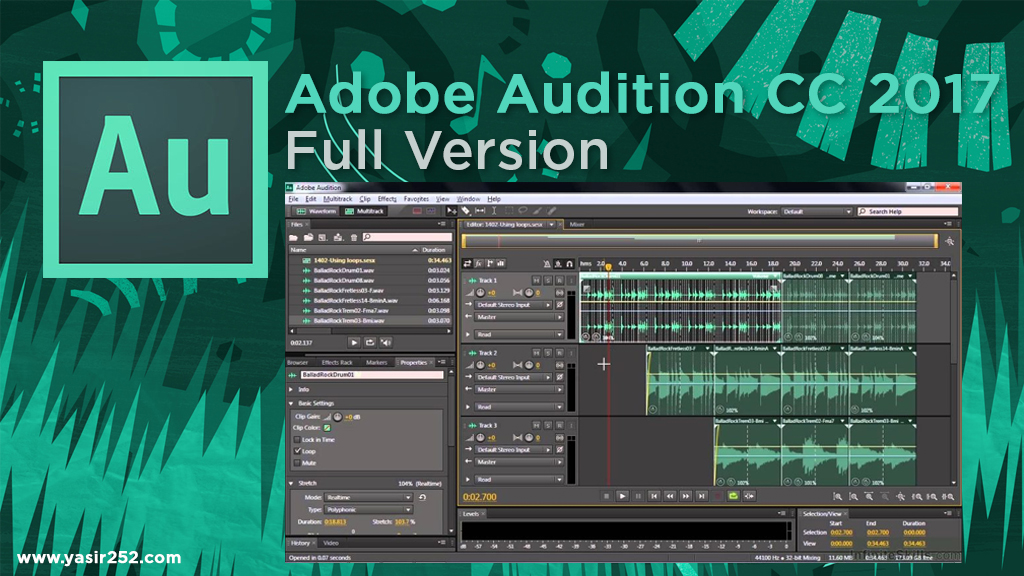

Hover the cursor over "Mixdown to New File" and choose "Master output in session (Stereo)" in the context menu that appears. Press "Ctrl" and "A" at the same time to select all of the tracks. Experiment with different effects adjust each effect's "Wet/Dry" slider to control how much of the effect Audition applies to the specific track.Ĭlick the "Main" tab to switch back to the initial multitrack view. Ideally, each track in the mixing section should occupy its own "space" in terms of both volume and equalization.Īdd effects to each track, if desired, by clicking the arrow next to the first field under "FX" and selecting an effect from the context menu. Turn the "Stereo Pan" knob above each volume slider to pan a track left or right.Ĭlick the power button next to "EQ" on each track, then adjust the equalization settings by clicking and dragging the "dB" and "Hz" values. Adjust the volume sliders for each track to the desired level. Click the "Play" button to start playing the tracks. As is often the case, there is too little info to provide an accurate solution, so a lot of this is just guessing on my part.Click the "Mixer" tab at the top of the multitrack window to switch to the audio mixer. Please elaborate more about what you have (mics, piano type, etc) and what you are trying to achieve. After it's recorded, you can pan them anywhere you want. Set the inputs to Adobe from EMU track 1 left mono, track 2 right mono. Those should still be left and right, pre-panning in the mixer. If it's monitoring complete left and right piano/vocals that drives you nuts, maybe try plugging into the mixer first, set your monitor levels and panning so you like it better, and then send the two channels' direct outs to the EMU. With a simple piano and vocal recording, the piano should be stereo, and the vocals centered. You can't make "stereo" from a mono source, unless it's just effects trickery.

A completely separated far-left and far right panned piano/vocal recording (which can can 'technically' be called stereo.like an old Beatles recording), a collapsed panned left and right piano/vocal recording that brings both closer the center.or a completely mono recording, centered coming equally from both speakers. The way you present the whole thing is that you will have one of three things. If you have an electronic piano, if it's stereo, record it first as a stereo track, then record the vocals?) (This is assuming you are talking about having an acoustic piano mic'ed up. The more interesting thing you might try is to use the two mics to record the piano in stereo (or two mono tracks, left and right), and THEN record a third mono track with the vocals, centered. If you are using the mixer and either channel is panned center, it'll go to both EMU inputs, and show up in both recording channels. Track two should be EMU right channel, mono. Once you combine them into one track (mono or stereo) you lose a lot of that ability.Īnyway, you need to assign track one input to the EMU left channel, mono. Leaving them separate allows you to work on each separately with effects, levels, compression, etc. And, what that does is take an actual (technically) stereo (as in separate tracks panned) thing and collapse it to mono, anyway. If you are worried about it being panned vocal left, piano right after recording, you can always pan the tracks to the center. Not sure why you want to use a mixer in the path when you still have only two mics, (or a mic and an electronic piano?) which the EMU can handle? The mixer won't make it "stereo", unless you have a stereo effect plugged in to the piano or vocal mic auxilliary effects loop.


 0 kommentar(er)
0 kommentar(er)
